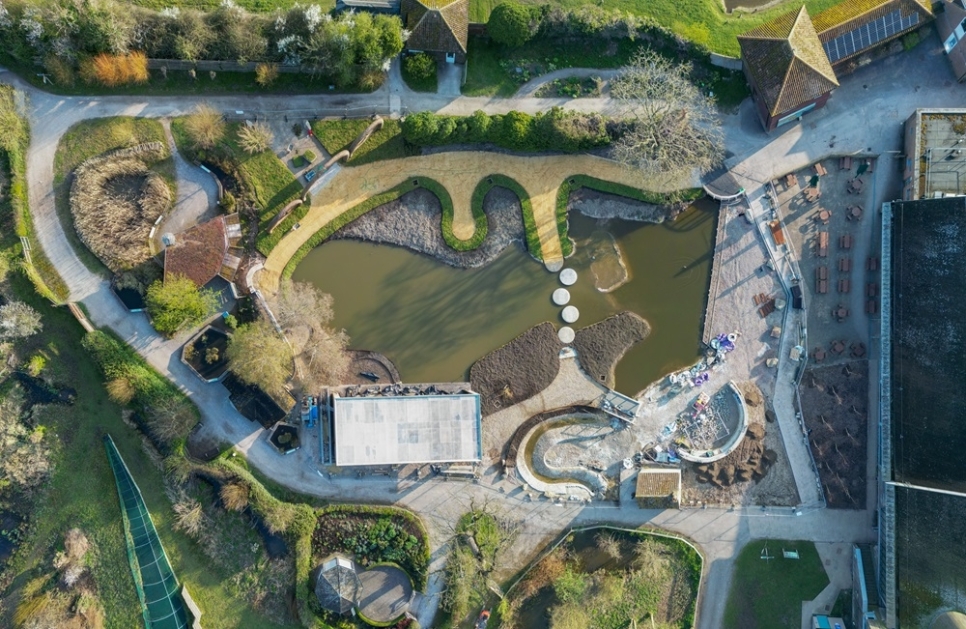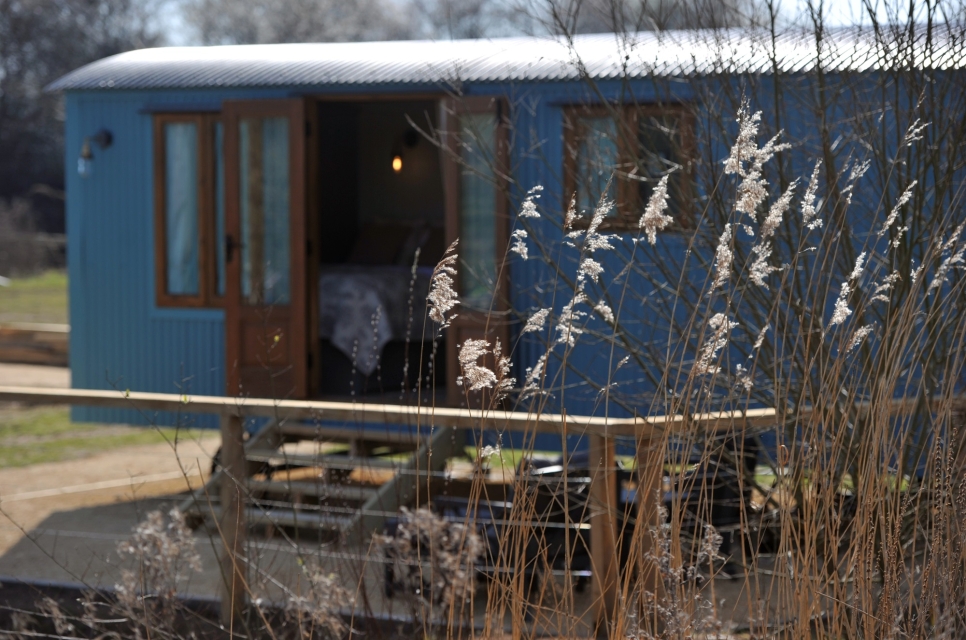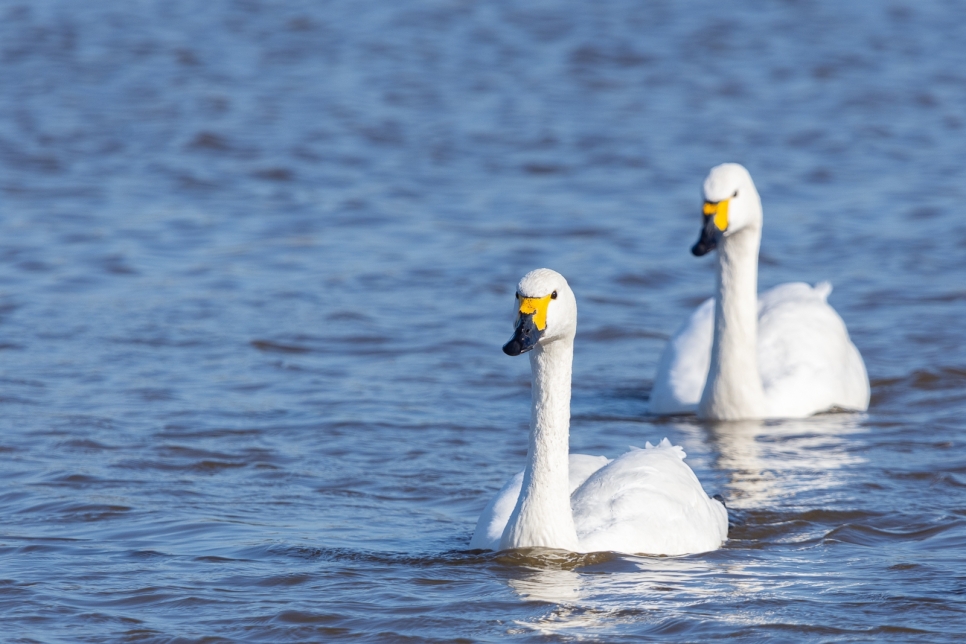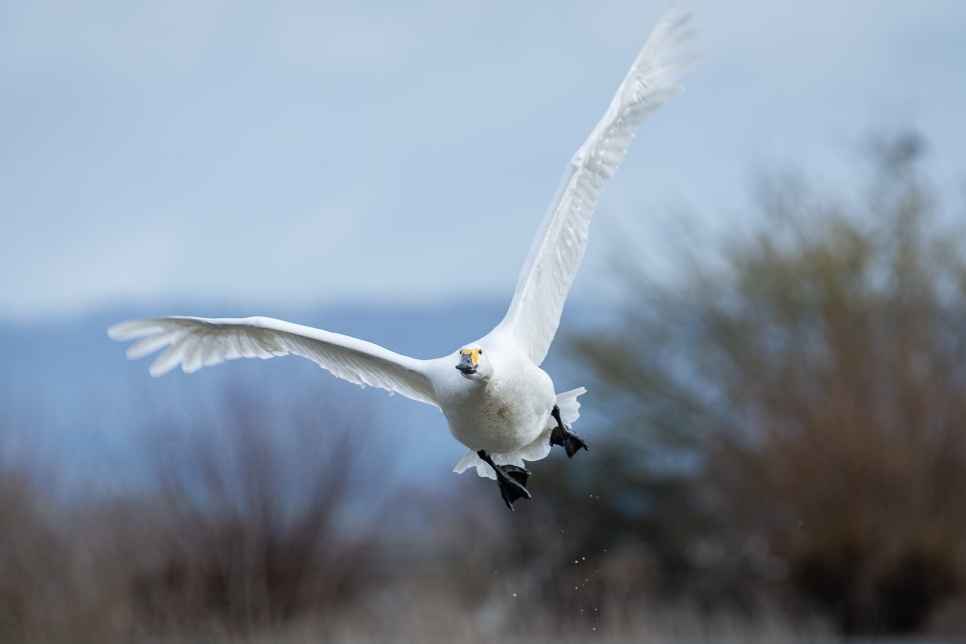The wait is over! Latest arriving swans since 1969 touchdown for winter
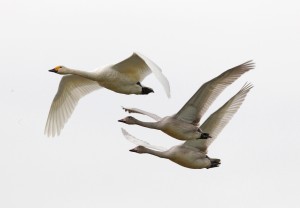
The first family of Bewicks swans finally arrived at WWT Slimbridge this morning. The event is traditionally seen as signalling the start of winter and this year is around two weeks later than usual.
Normally the small wild swans, which migrate from Russia to WWT Slimbridge Wetland Centre each winter, make their first appearance in mid to late October. This year’s late mild weather and unfavourable wind directions dramatically delayed the arrival of the first ones. Finally a family of two adults and two cygnets touched down this morning.
Julia Newth, swan expert at WWT Slimbridge, said:
“It’s the latest arrival date since 1969! It is no coincidence that their arrival has coincided with a change from the mild temperatures and south-westerly head winds that have dominated in recent weeks.
“We are excited to see that the first arrivals are a family because the swans desperately need more cygnets to bolster the dwindling population.
“Swan volunteer Steve Heaven quickly identified the adult pair from their distinct bill patterns as regular WWT Slimbridge visitors Nurton and Nusa. They are familiar with the reserve as they have spent the last five winters here. Their cygnets have now learnt the migration route from their parents and we are hoping that they will also become regular fixtures here.
”At the daily Wild Bird Feeds at WWT Slimbridge we really enjoy pointing out the swan families to visitors as they have such interesting histories and interactions on the lake.”
Nurton and Nusa have arrived with two cygnets in tow. Last week the Wildfowl & Wetlands Trust revealed that Bewick’s swans have suffered an alarming crash in numbers with numbers down across Europe by about a third since 1995. The biggest concern is that the swans are not returning from their Russian breeding grounds with enough cygnets.
At WWT Slimbridge Bewick’s swans are identified by their unique bill patterns. WWT’s started using this method to study Bewick’s swans exactly 50 years ago, when artist and naturalist Sir Peter Scott first recorded the facial markings of the Slimbridge swans. Today this work is one of the most intensive single-species studies in the world and has recorded in detail the lives of nearly 10,000 individual swans and kickstarted the international effort to conserve them.
Soon many more Bewick’s are expected to arrive at WWT Slimbridge with peak numbers generally reaching over 300. Visitors to WWT Slimbridge can see the swans at daily Wild Bird Feeds from a warm observatory at 4pm.
